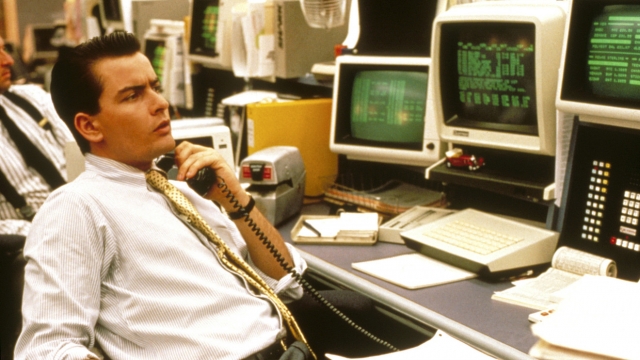
Market Extra: Black Monday was baptism by fire for these Wall Street pros
http://ift.tt/2ynzYQJ
The October 1987 stock-market crash that holds the record for the deepest one-day percentage drop still evokes memories of its carnage 30 years later.
The S&P 500 index
plunged into a bear market in a lone trading session on Oct. 19 that year, in what would later be described as the single-most horrendous panic-induced selling in Wall Street’s history.
Here are some of the voices from that infamous day of trading.
Kenny Polcari
“When I got to work that day, standing on the floor of the New York Stock Exchange and organizing my work, I realized there would be a tidal wave of blood hitting the United States,” recollects Kenny Polcari, director of the NYSE floor division at O’Neil Securities.
‘It was the first big failure of technology in the market, and a massive human failure, because no one questioned what the computer told them to do.’
Kenny Polcari
The culprit in Polcari’s view was the unintended consequences of everyone buying the same hedging products. One of those main products was portfolio insurance designed to protect investors from unexpected falls in the market.
A rules-based automated strategy, structured to buy Treasurys and sell stock futures when markets fell to protect investors’ portfolios, instead exacerbated the very fall from which it was supposed to protect, he said.
“It was the first big failure of technology in the market, and a massive human failure, because no one questioned what the computer told them to do,” said Polcari said.
Polcari, who was 26 years old at the time, vividly remembers the days leading up to that fateful Monday.
“Trading [in the preceding three days] was very heavy, and the types of orders were different. Three days of heaviness, three days of getting kicked in the gut and listening to the other guys—my mentors—who were saying something felt different,” Polcari said.
“We were getting orders to sell 150,000 of Johnson & Johnson [shares], when there were five other sellers of the same quantity. There was not one buy order. Everything was a sell order,” Polcari said.
“There was absolutely not a single person saying it was a buying opportunity. On that day it was sheer panic,” Polcari said.
J.J. Kinahan
On the Chicago Board Options Exchange, volumes in the S&P 500 options contracts spiked on Friday, Oct. 16, due to expiration of monthly options but also offering a whiff of what was to come.
‘There were grown men crying in the pit as their entire world unraveled. Some men lost everything they had ever worked for.’
J.J. Kinahan
“There were incredibly immense volumes and we were down big and the market overall looked bad,” said J.J. Kinahan, currently chief strategist at TD Ameritrade but who at the time was a 24-year old trader in the CBOE’s S&P 100 options pit, known as OEX.
By Monday, the situation in the pit turned really ugly.
“There were grown men crying in the pit as their entire world unraveled. Some men lost everything they had ever worked for,” Kinahan said.
Scott Wren
Scott Wren, who was a 27-year old currency trader at that time, remembers a strange day, saying he was happy he was trading currencies and not stocks or stock futures.
“Currency markets stood still on that day and the dollar did not move for hours, as people stopped trading,” said Wren, now senior global equity strategist at Wells Fargo Investment Institute. “By the end of that day, by 3 p.m., we were in disbelief—how can a stock market be down so much in one day?”
Peter Cardillo
“I was holding my breath, just like everyone else at the firm I was working in,” said Peter Cardillo, chief market economist at First Standard Financial.
“At the time, as a broker I remember telling clients to hold tight and not sell, because there was no fundamental reason to sell,” Cardillo said.
But many clients didn’t want to sit tight.
Diane Jaffee
“Because we were involved in portfolio insurance we knew what was causing the drop—this was a true case where there were more sellers than buyers,” said Diane Jaffee, currently senior portfolio manager at TCW, who was working as a young analyst at Kidder Peabody in 1987.
“We were all crowded around the Quotron terminals, watching prices moving lower and lower and nobody knew why they were moving lower,” Jaffee said. In the days before Bloomberg terminals, brokers used Quotron machines, which only had the latest price of a stock or index.
“By that fateful Friday, we were 100% out of stocks and our clients were happy not to have lost money in the market over the next few days. But to some degree it was scary to be out of the market and we probably waited a bit too long to get back in,” Jaffee said.
business
via MarketWatch.com – Top Stories http://ift.tt/dPxWU8
